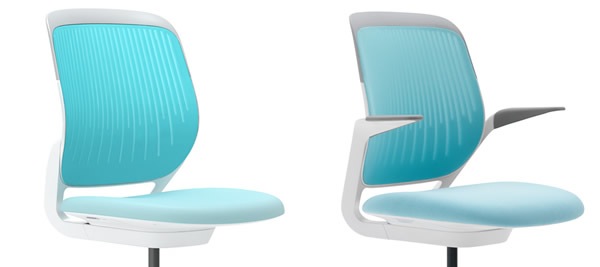
Can A Triennial Do New Design Justice?
There was a time when the Museum of Modern Art had an annual exhibition of the best designs and the worst designs of the year. MoMA ended that decades ago. No museum dares organize such an exhibition now. Lawsuits, or the threat of them, scare institutions. So much for consumer protection. Its our loss.
Now we have Why Design Now?, the National Design Triennial at the Cooper Hewitt Museum of the Smithsonian Institution. In the expanded mansion off Fifth Avenue in Manhattan, some 134 exhibits are shoehorned into an inhospitable space. If theres a dearth of design in the American landscape, consider the awkwardness of gallery space in New York devoted to design. It has everything thats wrong with the Smithsonian – inelegant installation, dumbed-down explanations — minus Smithsonian-sized galleries to accommodate crowds. And why a triennial? Three years accounts easily for two design generations in cars and electronics.
Be prepared for an exhibition that stresses the utilitarian. For style (for the most part), these curators seem to say, try shops along Madison Avenue. The Design Triennial is where you enter, like church, to see grave problems addressed. There are welcome exceptions, like The Story of Stuff , (below) Annie Leonards animated video that spells out environmental threats to the world with charming clarity in all of 21 minutes. Youll wonder how the Texas textbook police (or other overseers) would treat teachers assigning such an informative video in schools.
This is not to say you shouldnt visit. Far from it. Design literacy is a constant process. Exhibitions promoting it should be watched, even when they do it at the Cooper Hewitt in what seems like baby steps to anyone over the age of 10. That said, this survey of utilitarian design has some fine moments. Here are a few.
Its most improbable product is no less necessary – the Return to Sender Artisan Eco Casket, a streamlined arched plywood box designed to send its occupant into eternity, although its also designed to decompose smoothly and quickly. Developed by Greg Holdsworth in New Zealand in 2007, the box can also conserve resources. “In the United States alone, the funeral industry buries over 90,000 tons of steel, 30 million board feet of hardwood, 3000 tons of copper and bronze, and 1.5 million tons of concrete every year,” were told in the catalog. All the more reason to leave as small a footprint as possible. The coffin could trigger cultural impediments to burial efficiency. It meets the design test. Will it meet the spiritual test?
Another favorite of mine is the disarmingly simple mahangu (pearl millet) thresher. If this were in an art gallery, youd be calling it arte povera, and some moneyed couple from the hedge fund crowd would be paying a lot more than what it costs to make – almost nothing. The elements are a bicycle wheel attached to pedals which spin the wheel as it rips grain from the millet stalks. The thresher (by Aaron Wieler and Dona Cohn of Hampshire College and the MIT International Design Development Summit) is now being refined by women in Mali who will be using it. They getting ease of use, and theyll be able to buy, build and maintain the simple device. Its shocking that basic needs – nourishment, reduction of work time — can be addressed so simply.

Samarth Bicycle Trailer
Another simple device is Samarth Bicycle Trailer, with materials, technology (if you can call it that) and assembly so basic that anyone can operate it or make it. The trailer is a box, enclosed by reeds, that sits on wheels. Hinges either close the box or open it, so that long objects can be transported. The trailer, designed by Radhika Bhalla when she was a student in Pasadena, is attached to a bicycle by wooden strips which can be pushed or pulled. Human energy powers it. It just requires that people can feed themselves, a task which this trailer makes easier.
Not all of the show is guerrilla design. Steelcase has a new Cobi chair (top) of recyclable materials which it is selling to Fortune 500 companies, and the Z-20 Concentrated Solar-power System from Israel arranges sets of mirrors that concentrate sunlight to maximize the energy that can be received. The collectors look like theyre part of a missile detection system. Who says military design doesnt bleed its way into civilian use? Three-pronged pods from BioPower Systems of Australia sway back and forth underwater to harness tidal power. Solar-powered Invisible Streetlights by Jongoh Lee of South Korea are in the form of leafy “branches” and attached to trees.
There is delicate poetry in those electric “branches” inspired by Japanese painting that reach for some common purpose between nature and technology. And then there is Kotaro Watanabes Furumai (“dance” in Japanese), which places a water-proof paper plate atop a 4-foot trembling metal rod. On the plate is the face of a child, on which a few drops of water can appear to be tears or an abstract pattern. The magical effect is an appreciation for the waters essential role in the world, and the childs picture tells you whom design might save the planet for. But step back. Furumai reminds you that wonderment is another worthy design goal.
